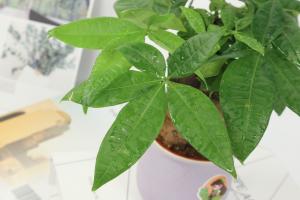How to Repair Tomato Plants
Tomatoes are one of the most popular and commonly grown vegetables in home gardens. However, they can be quite finicky plants, prone to a variety of problems that can lead to stunted growth, wilting, and poor fruit production. Fortunately, many of these problems can be fixed through proper care and maintenance. Here are some tips on how to repair tomato plants.
Identify the Problem
The first step in repairing a tomato plant is to identify the problem. There are many things that can go wrong with a tomato plant, from pests and diseases to environmental stress. Look for signs of yellowing leaves, wilting, spotting, or unusual growth patterns. Examine the soil to ensure it is moist but not waterlogged, and check for signs of pests such as aphids or spider mites.
Provide Proper Watering
Tomatoes need consistent, even watering to thrive. Too little water can cause plants to wilt and stunt growth, while too much water can lead to root rot and other problems. Water tomato plants deeply once or twice a week, depending on the weather and soil conditions. Use a drip irrigation system or soaker hose for best results, as these methods help to keep foliage dry and reduce the risk of disease.
Fertilize Regularly
Tomatoes are heavy feeders and require regular fertilization to produce healthy foliage and fruit. Use a balanced fertilizer formulated for tomatoes, applying according to package instructions. Avoid using too much nitrogen, as this can lead to excessive foliage growth at the expense of fruit production. For best results, fertilize every two to three weeks during the growing season.
Control Pests and Diseases
Tomatoes are susceptible to a variety of pests and diseases, which can cause wilting, yellowing leaves, spotting, and other problems. Prevention is key when it comes to pest and disease control. Keep plants well-spaced and remove any diseased foliage or fruit as soon as it appears. Use organic pesticides and fungicides sparingly, as these can harm beneficial insects and soil microbes.
Provide Proper Support
Tomatoes are heavy plants that require strong support to keep them upright. Use tomato cages, stakes, or trellises to keep plants from falling over and breaking. Train vines to grow up supports as they grow, pinching off suckers and side shoots as needed to encourage upward growth. Proper support can also help to promote even ripening and prevent fruit rot.
In Conclusion
Tomato plants can be fussy, but with proper care and maintenance, they can produce bountiful, delicious fruit. Identify problems early, provide proper watering and fertilization, control pests and diseases, and provide adequate support to keep plants healthy and productive. With a little effort, you can enjoy a bumper crop of juicy, flavorful tomatoes all summer long.

 how many times do yo...
how many times do yo... how many planted tre...
how many planted tre... how many pine trees ...
how many pine trees ... how many pecan trees...
how many pecan trees... how many plants comp...
how many plants comp... how many plants can ...
how many plants can ... how many plants and ...
how many plants and ... how many pepper plan...
how many pepper plan...






























